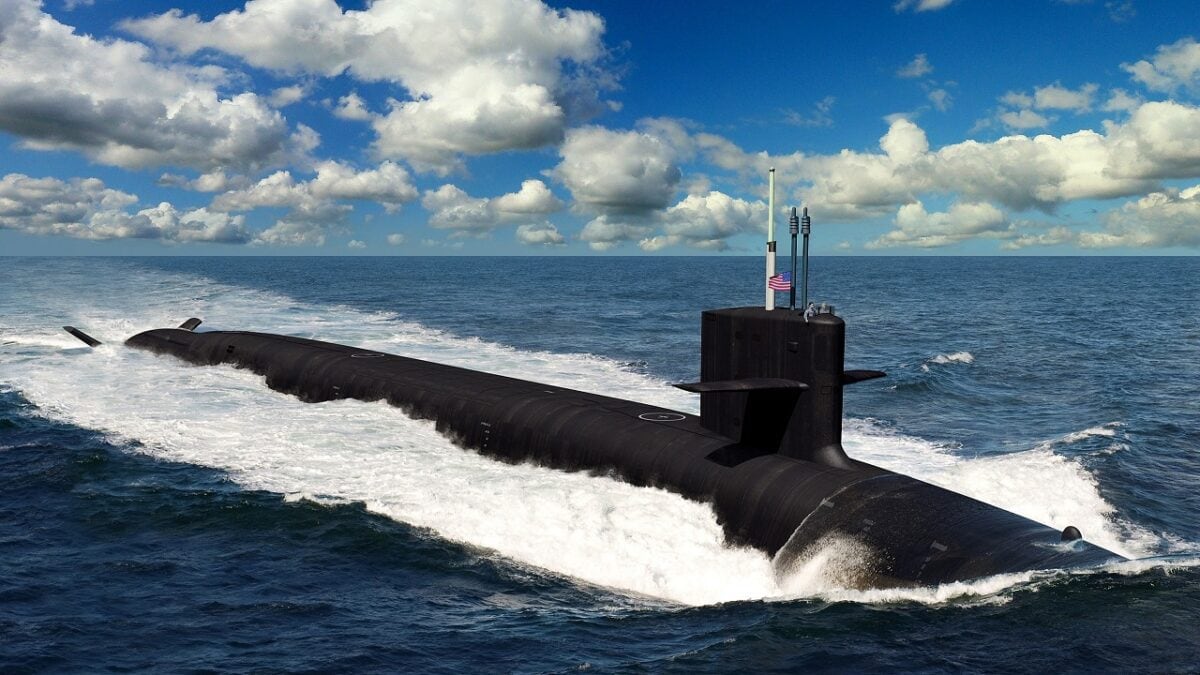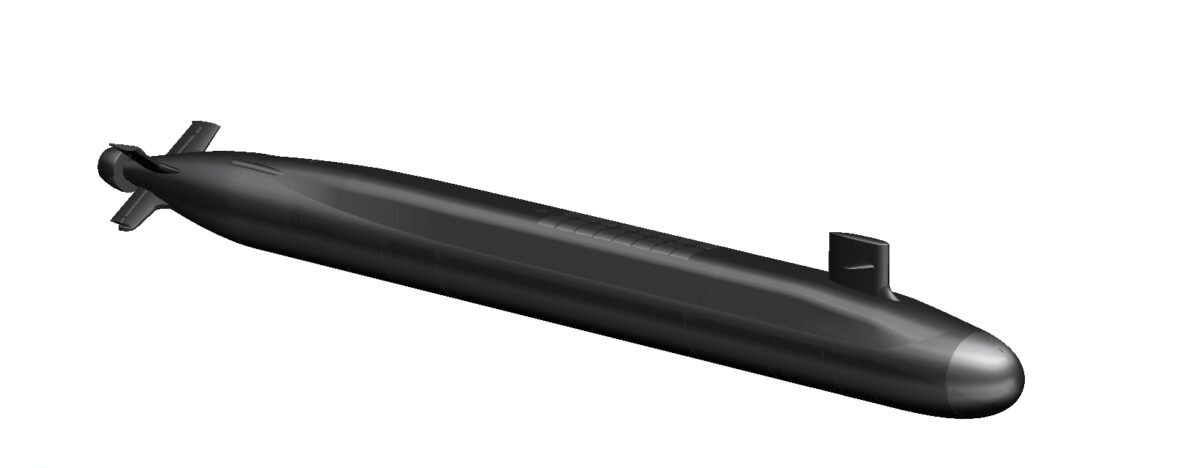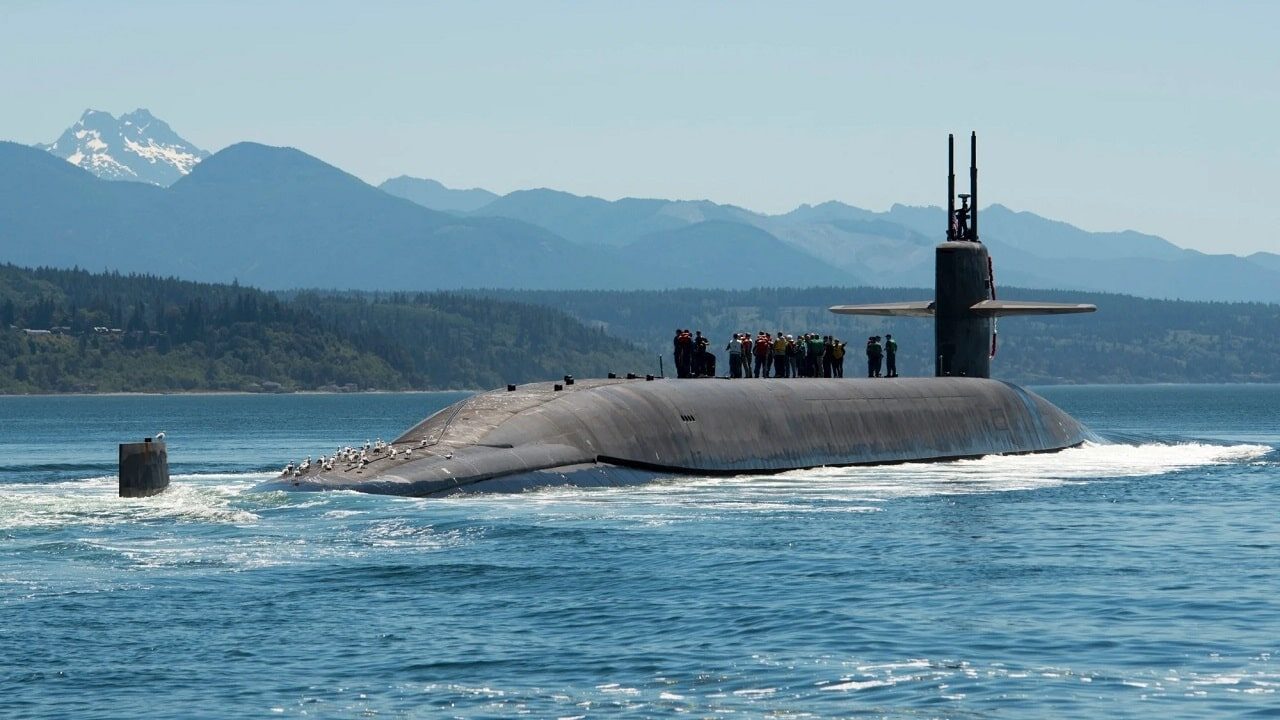Columbia-Class SSBN: The Future of the US Navy: The United States Navy currently operates fourteen aging Ohio-class ballistic missile submarines (SSBNs), which were built between 1976 and 1997. In addition, four of the oldest submarines of the class were converted to cruise missile submarines (SSGN) as part of the Strategic Arms Reduction Treaty (New START) with the Russian Federation.
As those SSBNs are expected to reach the end of their expected life before the end of the decade, yet remain a key component of the United States military’s nuclear triad, there has been a serious concern is that a shortage of boats could impact the nation’s nuclear deterrent capabilities. SSBNs carry seventy percent of the U.S. operational nuclear deterrent arsenal and are the most survivable leg of the nuclear triad.
For those reasons, U.S. Navy has identified the Columbia-class program as a top priority.
Work Underway
On October 1, 2020, construction began on the future USS Columbia (SSBN-826), the first of a planned twelve submarines in the new class of U.S. Navy nuclear-powered submarines to replace the Ohio-class beginning at the end of the decade. Research and development work on the new class of SSBNs has been underway for several years, while advanced procurement (AP) funding for the lead vessel began in the fiscal year 2017 (FY17).
The new SSBNs will be the largest submarines ever built by the United States. Each of the planned dozen boats will be 560 feet in length and have a beam of 43 feet. The class is being constructed with a life-of-ship reactor, which will result in a shorter mid-life maintenance period, and each was designed to serve a forty-two-year service life. This will allow the dozen Columbia-class SSBNs to replace the existing fourteen Ohio-class boats – and reduced overall upfront procurement costs.
The Columbia-class will be equipped with sixteen SLBM tubes, as opposed to twenty-four SLBM tubes on Ohio-class SSBNs. That will also reduce construction, operations, and maintenance costs. In addition, the new boats will utilize the joint American-British developed Common Missile Compartment (CMC), which will also be installed on the Royal Navy’s new Dreadnought-class submarines. It was designed to launch the Trident II D5 intercontinental ballistic missile (ICBM). The joint effort has been reported to save each nation hundreds of millions of dollars.
Taking Shape in Rhode Island
In March, USNI News reported that the future USS Columbia has been taking shape at the General Dynamics Electric Boat facility in Quonset Point, Rhode Island.
Though the new submarine will carry eight fewer nuclear missiles than its predecessor, Columbia will be longer, heavier, and feature a complex electric drive propulsion system and associated technology.

An artist rendering of the future U.S. Navy Columbia-class ballistic missile submarines. The 12 submarines of the Columbia-class will replace the Ohio-class submarines which are reaching their maximum extended service life. It is planned that the construction of USS Columbia (SSBN-826) will begin in in fiscal year 2021, with delivery in fiscal year 2028, and being on patrol in 2031.

Early rendering of what Columbia-class could look like
The $110 billion program has been utilizing techniques that were refined during the construction of the Virginia-class to maximize the efficiency of assembling the complex hulls while meeting a timeline with razor-thin margins. The goal will be to have the new Columbia-class vessels enter service as the Ohio-class boats are set to retire. And as the 19th century patriotic tune proclaimed, Columba will be the “gem of the ocean.”
Now a Senior Editor for 1945, Peter Suciu is a Michigan-based writer who has contributed to more than four dozen magazines, newspapers and websites. He regularly writes about military hardware, and is the author of several books on military headgear including A Gallery of Military Headdress, which is available on Amazon.com. Peter is also a Contributing Writer for Forbes.

